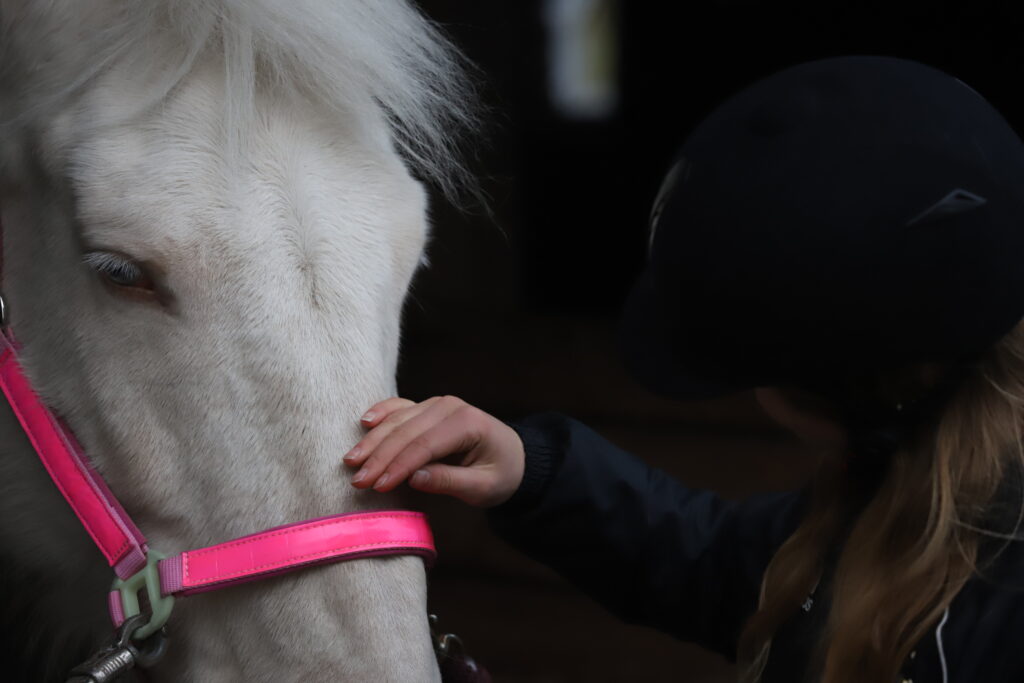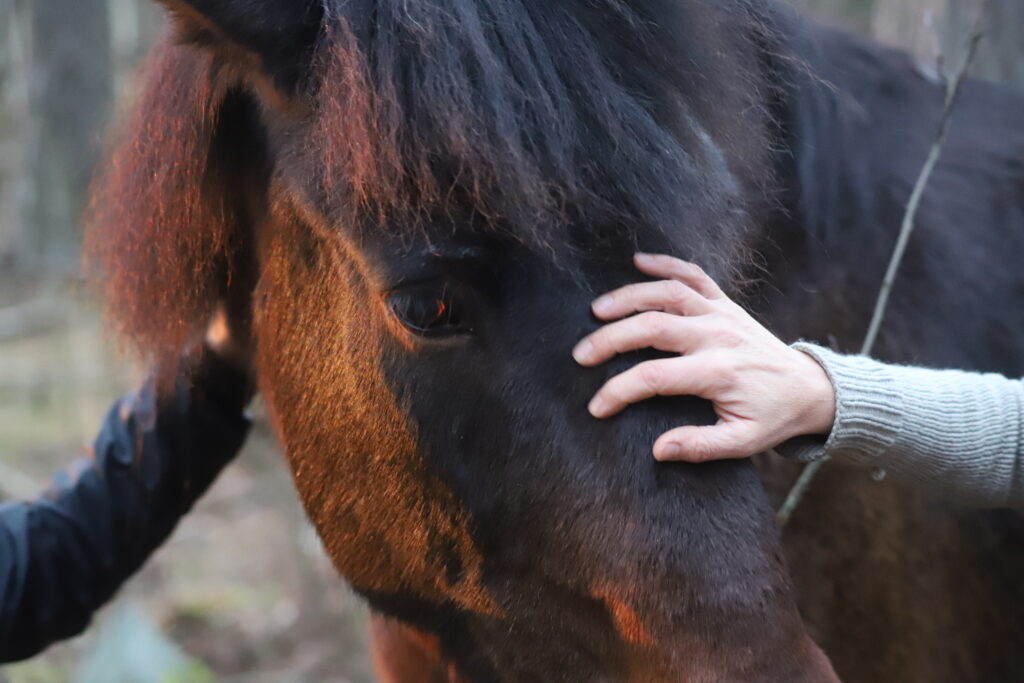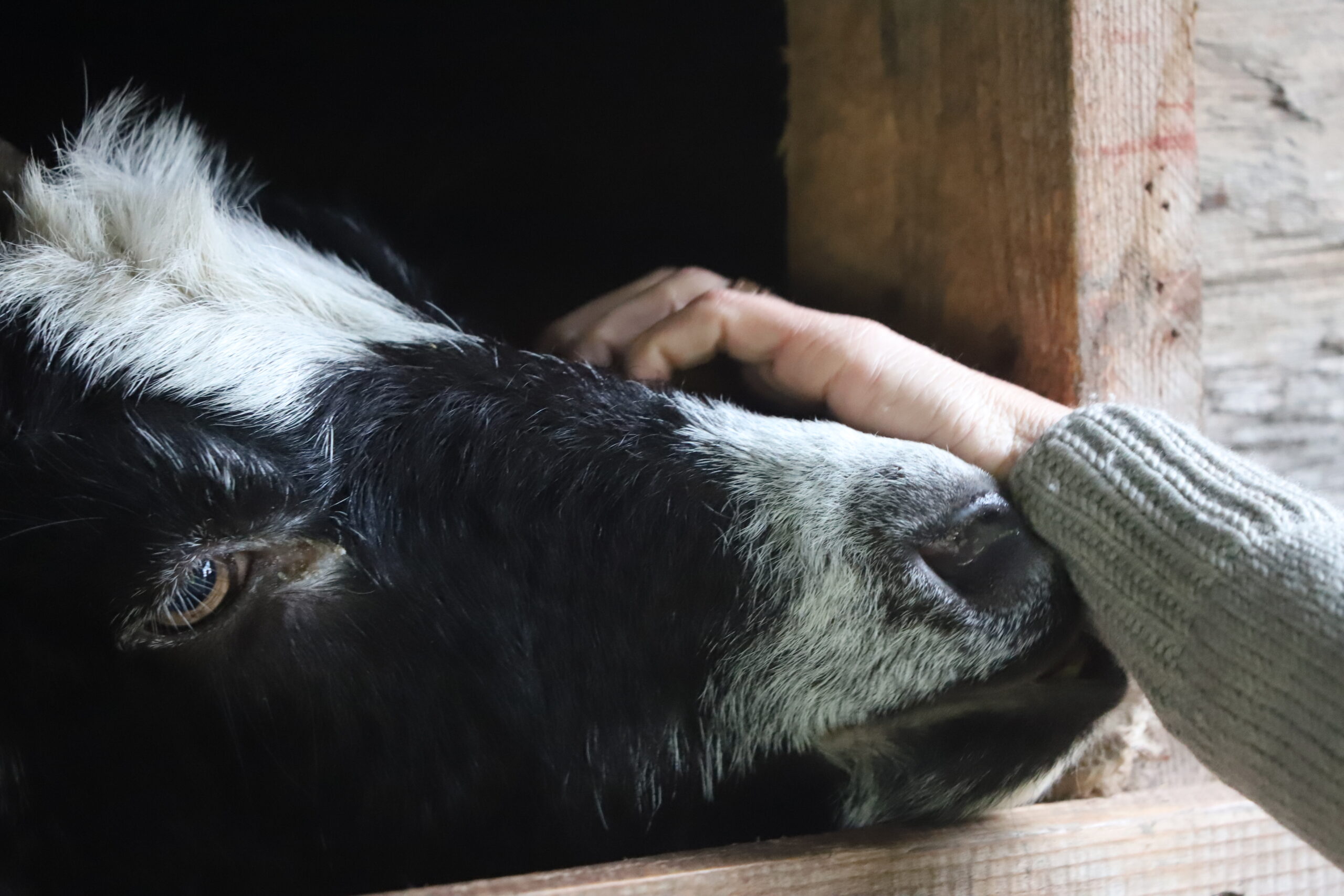Maria Hofman-Bergholm

We live in a constantly changing world and it is recognized that the standard of living never has been so high as it is in many Western countries today. During the last decades, technological development has changed the world radically. Internet and social media have shrunk the world to fit in a smartphone and you can join communities, different kind of forums and reach the most remote corner in the world with a click on a screen.
The possibilities are endless and the opportunity to choose your own way through life has probably never been greater than now, but could this be our Achilles-heel? (Tebelius Bodin 2020; World Economic Forum 2020; Our World in Data 2016.)
According to several studies, the mental health among youth is not very good. In the Nordic countries surveys indicate that a growing number of young people, especially girls, show symptoms of mental health problems. Mental illness seems to increase alarmingly fast among both youth and children. In Finland, the proportion of pupils with problematic school absenteeism is increasing and surveys indicate that the lack of faith in the future is quite common among Finnish youth. Parameters that have deteriorated are, among others, hope for the future and quality of life and purpose and meaning of life while there is an increase in anxiety and depression. (Alanko, Melander, Ranta, Engblom & Kosola 2023; Tankesmedjan Magma 2022.)

There is also research claiming that a lot of youth express worrying and anxiety regarding the difficulty of making right choices in life (Eronen, Jutila & Pitkänen 2022). This is an indication that the endless possibilities might have a downside if it leads to increased anxiety and poorer mental health. Research has identified several factors increasing the risk for school attendance problems and mental health problems have shown to be an individual factor which is linked to an increased risk of absenteeism. In Finland there was in 2020 at least 4,000 students with school attending problems (Utbildningsstyrelsen 2020).
It is of great importance for students to pass education and to receive grades as this could underpin the interest in further studies and result in better job opportunities and better living conditions. It also appears that mental health, trust and self-esteem are benefited from passing education and this comes with a reduced risk of crime, violence and exclusion. (Skolhälsan 2023; Alanko et.al. 2023.)

Social exclusion is today a widespread experience, and technology has developed increasingly more available ways for it to spread (Malik & Obhi 2019). The expression ‘Leaving no-one behind’, is a central aspiration underpinning the 17 UN Sustainable Development Goals (SDGs) , but unfortunately, it appears that social exclusion is an increasing trend also in Finland. In May 2023 Svenska Yle (Kajander 2023) highlighted the problem with the increasing number of Finns not entering the workforce, even though they do not appear as unemployed in the statistics. According to Pylkkänen (Kajander 2023), an Under-Secretary of State at the Ministry of Employment and the Economy, there are about 140 000 Finns in this situation right now. According to calculations one lost career in a low-wage occupation costs society around two million euros (ibid.).
However, it should not always only be about the society costs, but it should also be about the people behind the numbers who end up in social exclusion and what could be done to help them build a decent life. One thing that could be done is to reduce absenteeism to give youth a fair start from the beginning.

There is quite strong evidence that nature-based interventions have a positive effect on children with behavioral problems and cognitive problems such as ADHD (Grahn 2022). A systematic review published in 2022 found evidence that outdoor learning has both measurable socio-emotional and academic benefits as well-being benefits. According to Kuo, Barnes and Jordan (2019) there is also evidence supporting the theory that outdoor experiences underpin the development in children in the gaining of skills, attitudes and behaviors that are needed in the 21st century. According to Marselle, Warber and Irvine (2019) nature is also an important resource for fostering resilience, meaning the ability to ‘bounce back’ from adversity. Kuo et.al. (2019) highlight the need for taking nature seriously as a resource for learning for everyone, but especially for pupils who for some reasons are not reached by traditional education in an effective way.
Nature-based interventions of other kind have also shown to contribute to student health in various ways. For example, experimental research (Peel, Nguyen & Tannous 2023) indicates that students exposed to therapy dogs during a stressful period of final examination had a better mood than those who were not exposed and it proved to affect students’ mental health positively.
Interventions with animals are thus a part of nature-based interventions, as animals are nature. It is evident that animals have a positive effect on humans’ wellness. People’s stress is reduced by contact with animals, and the interaction lowers heart rate and blood pressure. It has also been shown that cortisol levels in the blood and saliva drop when interacting with animals (Håkanson 2009; Håkanson, Palmgren Karlsson, Sallander & Henriksson 2008). The fact that the interaction between animals and humans is based on wordless communication makes the relationship special. Animals are honest in their reactions when interacting with humans. The animal offers physical contact if you are alone and a long-term, stable and intimate relationship can be built (Håkanson et. al. 2008; Carlsson 2017).

During 2022-2024, there is an interesting research project in Sweden where the Swedish University of Agricultural sciences in collaboration with Uppsala University and the Swedish Therapy Dog School, investigate if students with more than 20% absence from school in the last term can regain motivation to go to school with the help of a team consisting of a trained school dog and a teacher or resource educator. (Sveriges Lantbruksuniversitet 2023.)
There is a lot of ongoing research in the field of nature-based intervention and well-being, and nature is with certainty identified to have a lot to offer.
Photos of horses and goat: Sara Kåll-Fröjdö.
Photos of service dogs: Maria Hofman-Bergholm.
References
Alanko, K., Melander, K., Ranta, K., Engblom, J. & Kosola, S. 2023. Time Trends in Adolescent School Absences and Associated Bullying Involvement Between 2000 and 2019: A Nationwide Study. Child Psychiatry & Human Development. Available at: https://doi.org/10.1007/s10578-023-01601-1
Carlsson, C. 2017. Hästunderstött socialt arbete – ett samtalsrum med potentiella möjligheter för ungdomar med självskadebeteenden och deras personal. Linnaeus University Dissertations No 283/2017.
Eronen, E., Jutila, K. & Pitkänen, V. 2022. Miten meillä menee? Katsaus suomalaisten mielenmaisemaan. E2 Tutkimuksen katsauksia 1/2022. Available at: https://www.e2.fi/media/julkaisut-ja-alustukset/mitenmeillamenee/e2katsaus2022-miten-meilla-menee.pdf. Accessed 10 November 2023.
Grahn, P. 2022. Evidensläge för behandlingsinsatser utomhus. In Engström, Liljegren, Juuso & Lundmark Alfredsson (eds.) Vård, omsorg och rehabilitering utomhus. Lund: Studentlitteratur, 299-316.
Håkanson, M. 2009. Djurens betydelse för människornas hälsa. Skara: Sveriges Lantbruks Universitet.
Håkanson, M., Palmgren Karlsson, C., Sallander, M. & Henriksson, G. 2008. Husdjur och folkhälsa. En forskningsöversikt om betydelsen av sällskapsdjuren och lantbrukets djur för människors hälsa. AgroVäst & SLU.
Kajander, S. 2023. Elina Pylkkänen befarar att fyra av tio unga har så stora fysiska problem att de inte kommer orka med 6 timmars arbetsdagar. Available at: https://svenska.yle.fi/a/7-10033594. Accessed 11 November 2023.
Kuo, M., Barnes, M. & Jordan, C. 2019. Do Experiences With Nature Promote Learning? Converging Evidence of a Cause-and-Effect Relationship. Front. Psychol. 10, 305. Available at: https://doi.org/10.3389/fpsyg.2019.00305. Accessed 11 November 2023.
Tankesmedjan Magma. 2022. Den svenskspråkiga ungdomsbarometern 2022. Available at: https://magma.fi/wp-content/uploads/2023/02/magma-ungdomsbarometer2022-digiupplaga-27feb23.pdf. Accessed 10 November 2023.
Malik, R. A. & Obhi, S. S. 2019. Social exclusion reduces the sense of agency: Evidence from intentional binding. Consciousness and Cognition 71, 30-38. Available at: https://doi.org/10.1016/j.concog.2019.03.004. Accessed 11 November 2023.
Marselle, M. R.; Warber, S. L. & Irvine, K. N. 2019. Growing Resilience through Interaction with Nature: Can Group Walks in Nature Buffer the Effects of Stressful Life Events on Mental Health? International Journal of Environmental Research and Public Health 16(6), 986. Available at: https://doi.org/10.3390/ijerph16060986. Accessed 11 November 2023.
Our World in Data. 2016. The short history of global living conditions and why it matters that we know it. Available at: https://ourworldindata.org/a-history-of-global-living-conditions. Accessed 10 November 2023.
Peel, N., Nguyen, K. & Tannous, C. 2023. The Impact of Campus-Based Therapy Dogs on the Mood and Affect of University Students. International Journal of Environmental Research and Public Health 20(6), 4759. Available at: https://doi.org/10.3390/ijerph20064759. Accessed 11 November 2023.
Skolhälsan. 2023. Available at: https://hv.diva-portal.org/smash/get/diva2:1764192/FULLTEXT01.pdf. Accessed 12 November 2023.
Sveriges Lantbruksuniversitetet. 2023. Sociala tjänstehundars stöd till elever med problematisk skolfrånvaro. Available at: https://www.slu.se/fakulteter/vh/forskning/forskningsprojekt/hund/sociala-tjanstehundars-stod/. Accessed 12 November 2023.
Tebelius Bodin, A. 2020. Den analoga hjärnan i den digitala tillvaron. Djursholm: Hjärna Utbildning AB.
Utbildningsstyrelsen. 2020. Ungefär 4 000 elever i de högre årskurserna har kontinuerligt stor skolfrånvaro. Available at: https://www.oph.fi/sv/nyheter/2020/ungefar-4-000-elever-i-de-hogre-arskurserna-har-kontinuerligt-stor-skolfranvaro. Accessed 12 November 2023.
World Economic Forum. 2020. Here’s how technology has changed the world since 2000. Available at: https://www.weforum.org/agenda/2020/11/heres-how-technology-has-changed-and-changed-us-over-the-past-20-years/ Accessed 10 November 2023.
Maria Hofman-Bergholm
RDI-expert
Centria University of Applied Sciences
Tel. +358 40 356 3305


